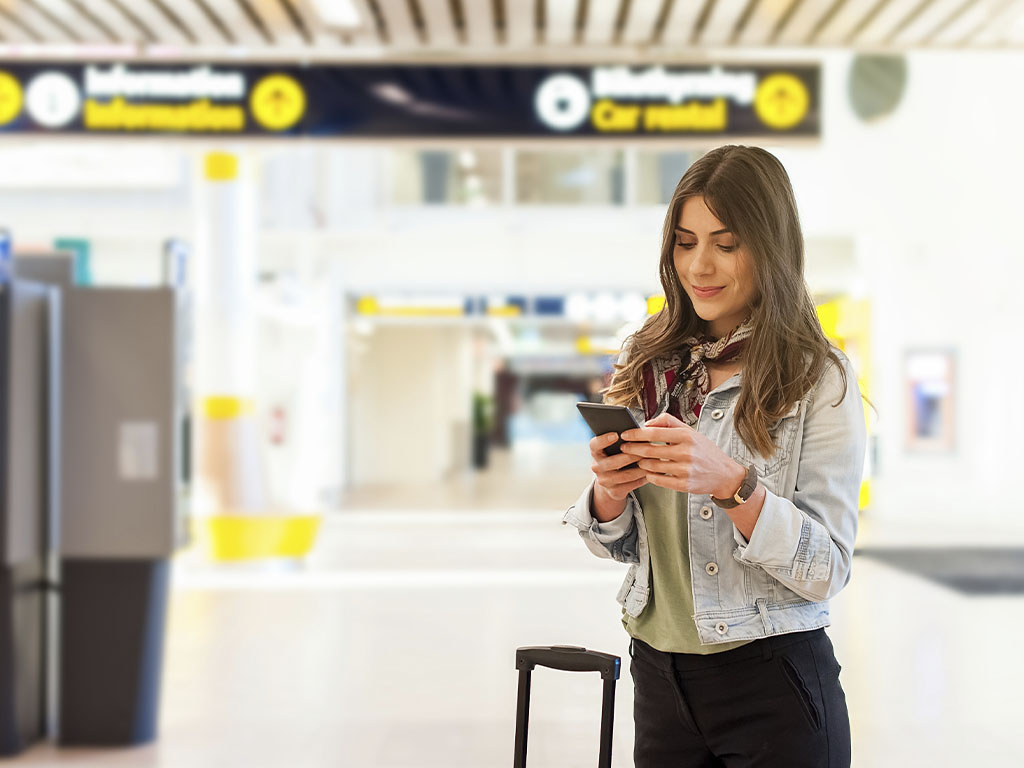Airline apps with companion features are fast becoming an integral extension for managing passenger relationships. It’s a trusted link that expands an airline’s cabin services, helps passengers navigate their journey and serves as a lifestyle app before, during and after a flight. These apps shine particularly bright on connected aircraft, giving passengers a central digital hub where all their inflight services — entertainment, shopping, flight information and other details — can be found.
Low-cost carriers, which have been on the cutting-edge of boosting revenue by selling ancillary products to their customers, have already discovered that their companion apps can be an ideal tool for up-selling. IdeaWorks and CarTrawler report that the top 15 LCC airline apps offer customers up to 13 different categories of à la carte ancillaries that passengers can manage and pay for directly on their mobile devices.

Here are six ways in which airlines can enhance their apps to improve their connection to customers and upgrade them to travel companions:
1. Let Passengers Prepare the Flight
Passengers can create playlists, bookmark duty-free shopping items, select dining options or purchase partner services like event tickets.
Since passengers already rely on airline apps for bookings, check-ins, and other pre-flight tasks, adding customer-experience features — like creating inflight playlists, pre-selecting movies or pre-booking meals — can make the airline app more useful. After all, solving these needs is essential for creating stickiness and the willingness for customers to keep these apps on their mobile devices.
2. Enable Multitasking
Passengers already multitask on the ground, and they expect those capabilities while traveling.
“Multi-screening onboard is a natural reflection of the multitasking behavior of passengers on the ground. Not having to pause a movie on the inflight screen in order to check the flight map, but checking it on your personal device instead, is just one example of user-centric design,” says Raymond Kollau, founder of Airline Trends and co-founder of the PaxEx 360 passenger experience design consultancy.
3. Personalize the Passenger Experience
Once a passenger’s PED is paired with the seatback monitor, the seat is transformed from a generic to a personal experience. Airline companion apps empower passengers to control and customize their cabin experience.
Kollau points to the content-focused features of the Singapore Airlines and Turkish Airlinescompanion apps. “[These features] are just the first step towards a broader ‘check-in to your seat’ experience,” he explains. “As already showcased with Panasonic’s Waterfront seating concept, synchronizing personal data between a customer’s smartphone and the IFE system allows the creation of more immersive ‘just-for-me’ experiences.”
To that end, these apps can also recall in-seat lighting and seat positioning preferences, Kollau adds. They can even pick up a movie where the passenger left off, or recognize their frequent-flyer status to give them perks like free Wi-Fi.

“Multi-screening onboard is a natural reflection of the multitasking behavior of passengers on the ground. Not having to pause a movie on the inflight screen in order to check the flight map, but checking it on your personal device instead, is just one example of user-centric design,”
-Raymond Kollau
Founder of Airline Trends
4. Facilitate Shopping and Hospitality
Companion apps and multi-screening allow passengers to socialize, shop and pay in the privacy of their own device while watching a movie on the seatback. This removes friction and augments the passenger experience.
Inflight connectivity opens up unlimited opportunities for airlines to make relevant offers of ancillary services to passengers. As APEX CEO Joe Leader told Future Travel Experience: “Passengers are seven times more likely to make a purchase while on a trip than when at home.” Some of the most lucrative ancillary revenues come from inflight seat upgrades, food and beverage sales, online shopping and destination bookings, he continued.
Kollau says passengers can even use their smartphones to pay for these services via digital wallets such as Apple Pay and Google Pay. “Using your own smartphone to make a payment for food and beverage or duty-free items ordered via the in-seat IFE system is an obvious one here,” he notes. “Passengers feel more comfortable paying with a credit card via their own mobile phone than swiping a credit card to a reader attached to the IFE screen.”
5. Take Advantage Of Advertising Opportunities
There is a greater likelihood that passengers will notice ads, promotions or rewards offered by the airline when these are available on a variety of platforms. By using frequent flyer and/or registered traveler data, airlines can also fine-tune their offerings.
“Personalized, more relevant offers increase the likelihood of passengers making inflight purchase, be it food and beverage, travel items, duty-free or destination content,” Kollau says.
6. Improve the Passenger Experience With Data
The nature of loyalty is changing, moving from points or miles, to product and service offerings, that provide a more personalized travel experience. Airline companion apps play an important role in this new loyalty dynamic by collecting valuable information about what passengers like — and what they don’t. This helps airlines fine-tune their services, improve design and build more meaningful relationships with their customers.
By converting their apps into true travel companions, airlines can build stronger bonds with their customers, optimize ancillary services and — as the IdeaWorks and CarTrawler report mentions — get a step ahead of the competition as players like Google increase their footprint in the travel space. “For the present time, it’s still possible to be better than Google,” the report reads. “But this advantage will only remain for companies that unlock the code of how mobile retail can connect, entertain, inform, transact and even inspire.”



